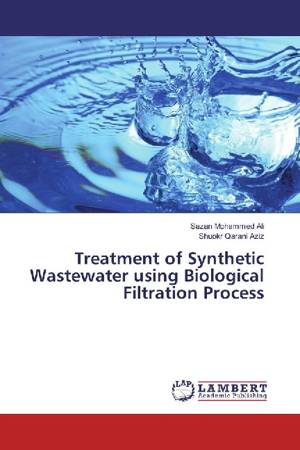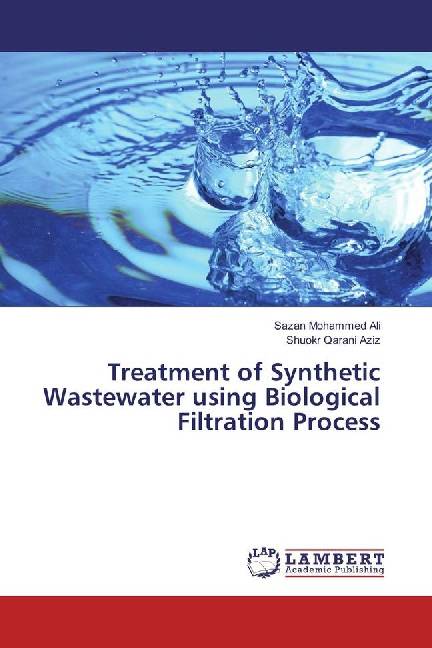
- Afhalen na 1 uur in een winkel met voorraad
- Gratis thuislevering in België vanaf € 30
- Ruim aanbod met 7 miljoen producten
- Afhalen na 1 uur in een winkel met voorraad
- Gratis thuislevering in België vanaf € 30
- Ruim aanbod met 7 miljoen producten
Zoeken
Treatment of Synthetic Wastewater using Biological Filtration Process
Sazan Mohammed Ali, Shuokr Qarani Aziz
Paperback | Engels
€ 49,45
+ 98 punten
Omschrijving
Produced wastewaters must be treated to save the environment and natural water bodies. Erbil municipal and Yoruksut dairy factory wastewaters (YDFWW) were characterized. Biological trickling filters (BTFs) technique with different filter media sizes and depths were used for treatment of wastewater. BTF was used to treat the synthetic wastewater based on the real chemical oxygen demand (COD) concentrations of YDFWW. The treatment processes were categorized by preliminary, BTF experiments by applying response surface methodology (RSM) and repeated experiments. In preliminary experiments, equivalent COD concentration, optimum powdered activated carbon (PAC) dosage, optimum contact time and optimum settling time were examined. Based on optimum results given by RSM and laboratory observations for all type of BTFs, the disposed plastic cap filter media with medium size of 5 cm and depth of 60 cm were chosen. Both normal-BTF (N-BTF) and PAC added to BTF (PAC-BTF) were used in repeated experiments. Results of N-BTF showed a higher removal efficiencies compared with the PAC-BTF, which means the contaminants are removed biologically. PAC-BTF for some pollutants showed a better performance.
Specificaties
Betrokkenen
- Auteur(s):
- Uitgeverij:
Inhoud
- Aantal bladzijden:
- 124
- Taal:
- Engels
Eigenschappen
- Productcode (EAN):
- 9783330062719
- Uitvoering:
- Paperback
- Afmetingen:
- 150 mm x 220 mm

Alleen bij Standaard Boekhandel
+ 98 punten op je klantenkaart van Standaard Boekhandel
Beoordelingen
We publiceren alleen reviews die voldoen aan de voorwaarden voor reviews. Bekijk onze voorwaarden voor reviews.








